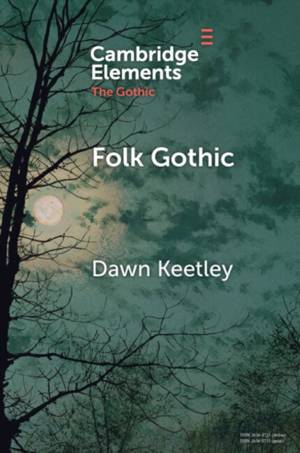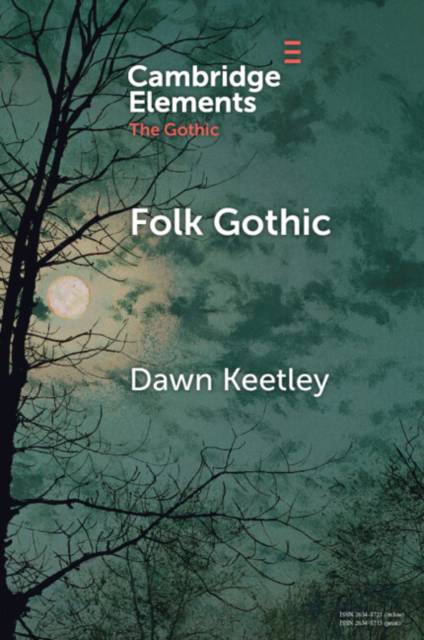
- Afhalen na 1 uur in een winkel met voorraad
- Gratis thuislevering in België vanaf € 30
- Ruim aanbod met 7 miljoen producten
- Afhalen na 1 uur in een winkel met voorraad
- Gratis thuislevering in België vanaf € 30
- Ruim aanbod met 7 miljoen producten
Zoeken
Omschrijving
Folk Gothic begins with the assertion that a significant part of what has been categorised as folk horror is more accurately and usefully labelled as Folk Gothic. Through the modifier 'folk', Folk Gothic obviously shares with folk horror its deployment (and frequent fabrication) of diegetic folklore. Folk Gothic does not share, however, folk horror's incarnate monsters, its forward impetus across spatial and ontological boundaries and the shock and repulsion elicited through its bodily violence. The author argues that the Folk Gothic as a literary, televisual and cinematic formation is defined by particular temporal and spatial structures that serve to forge distinctly nonhuman stories. In emphasising these temporal and spatial structures - not literal 'folk' and 'monsters' - the Folk Gothic tells stories that foreground land and 'things', consequently loosening the grip of anthropocentrism.
Specificaties
Betrokkenen
- Auteur(s):
- Uitgeverij:
Inhoud
- Aantal bladzijden:
- 78
- Taal:
- Engels
- Reeks:
Eigenschappen
- Productcode (EAN):
- 9781009160896
- Verschijningsdatum:
- 1/02/2024
- Uitvoering:
- Paperback
- Formaat:
- Trade paperback (VS)
- Afmetingen:
- 152 mm x 229 mm
- Gewicht:
- 117 g

Alleen bij Standaard Boekhandel
+ 63 punten op je klantenkaart van Standaard Boekhandel
Beoordelingen
We publiceren alleen reviews die voldoen aan de voorwaarden voor reviews. Bekijk onze voorwaarden voor reviews.











